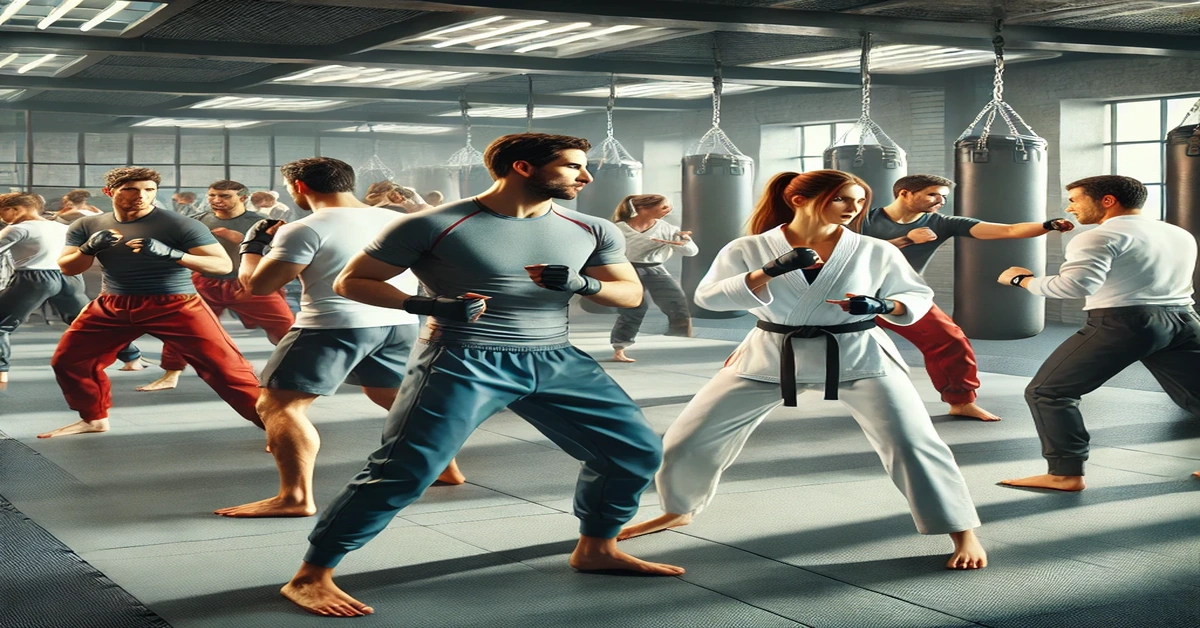Self-defense is a vital skill that everyone should consider learning not just as a precaution but as an empowering tool to build confidence and resilience. Martial arts offer a structured and effective way to develop these skills, providing techniques that are not only practical but can also save lives in critical situations. When it comes to choosing the best martial arts for self-defense, it’s essential to look for styles that emphasize real-world applications, efficiency, and adaptability.
From ancient traditions to modern combat systems, martial arts have evolved to address a variety of scenarios. Each style offers unique strengths, catering to different needs and preferences. In this guide, we explore the most effective martial arts for self-defense, giving you the insights to make an informed choice that aligns with your personal goals.
What Makes a Martial Art Effective for Self-Defense?
Not every martial art is equally suited for self-defense. Many styles focus on competition or spiritual growth, while others are specifically designed to handle real-world threats. The most effective self-defense martial arts share common qualities, including practicality, simplicity, and a focus on results.
Key qualities to consider include:
- Adaptability: Techniques that work in various scenarios, from close combat to weapon disarmament.
- Efficiency: Moves designed to neutralize threats quickly.
- Ease of Learning: Techniques that can be mastered without years of training.
- Realism: Training that prepares you for unpredictable, high-pressure situations.
With these qualities in mind, let’s dive into the martial arts that excel in self-defense.
Krav Maga: The Ultimate Self-Defense System
Krav Maga, developed by the Israeli Defense Forces, is widely regarded as one of the most effective martial arts for self-defense. It prioritizes survival and neutralizing threats as quickly as possible, incorporating techniques from boxing, wrestling, and street fighting.
Krav Maga focuses on:
- Neutralizing armed and unarmed attackers.
- Targeting vulnerable areas like the eyes, groin, and throat.
- Adapting to real-world scenarios, such as multiple attackers or confined spaces.
This martial art is ideal for those seeking a straightforward and powerful approach to personal safety.
Brazilian Jiu-Jitsu (BJJ): Ground Combat Mastery
Brazilian Jiu-Jitsu emphasizes grappling and ground fighting, teaching practitioners how to control and subdue opponents effectively. Since many real-life confrontations end up on the ground, BJJ is an essential skill for close-contact self-defense.
Key benefits include:
- Leverage-based techniques that work regardless of size or strength.
- Submissions and holds to incapacitate an opponent.
- Practical methods for escaping holds and defending against larger attackers.
BJJ is an excellent choice for those looking to develop confidence in ground-based confrontations.
Boxing: Striking with Precision
Boxing’s focus on punches, footwork, and defense makes it an effective martial art for self-defense. Its simplicity and practicality allow practitioners to learn powerful techniques quickly.
Boxing emphasizes:
- Developing speed, accuracy, and power in punches.
- Defensive skills like slipping, dodging, and blocking.
- Enhanced reflexes and situational awareness.
A solid foundation in boxing can help you protect yourself and respond effectively in high-stress situations.
Muay Thai: The Science of Eight Limbs
Muay Thai, or Thai Boxing, uses punches, kicks, elbows, and knees to deliver devastating strikes. This martial art’s comprehensive approach makes it a formidable self-defense system.
Muay Thai focuses on:
- Powerful and versatile striking techniques.
- Clinch fighting to control opponents at close range.
- Building endurance and strength for real-world encounters.
Its combination of power, precision, and adaptability makes Muay Thai a favorite among self-defense practitioners.
Judo: Using Opponents’ Strength Against Them
Judo teaches throws, joint locks, and grappling techniques, focusing on using an attacker’s strength to your advantage. This Japanese martial art is excellent for close-range encounters where control is crucial.
Judo emphasizes:
- Techniques for neutralizing larger opponents.
- Effective defenses against grabs and holds.
- The ability to remain calm and composed under pressure.
Its emphasis on control and balance makes Judo a highly practical self-defense choice.
Jeet Kune Do: Bruce Lee’s Philosophy
Jeet Kune Do, created by Bruce Lee, is a philosophy that incorporates techniques from multiple martial arts. It focuses on efficiency, directness, and adaptability, making it highly effective for self-defense.
Jeet Kune Do emphasizes:
- Simplified, practical techniques for quick results.
- Adapting to unpredictable situations.
- A focus on precision, speed, and power.
Its flexibility and focus on real-world applications make Jeet Kune Do a valuable self-defense tool.
Wing Chun: The Art of Close Combat
Wing Chun is a Chinese martial art designed for close-range combat. Its rapid strikes and defensive techniques make it a practical choice for self-defense.
Wing Chun focuses on:
- Quick, precise strikes to vital areas.
- Defensive moves to neutralize attacks efficiently.
- Economy of motion to conserve energy and maximize impact.
Its straightforward approach and effectiveness in tight spaces make Wing Chun an excellent self-defense option.
Keysi Fighting Method: Street Combat Adaptability
The Keysi Fighting Method (KFM) was designed for self-defense in real-world situations. Known for its use in confined spaces and against multiple attackers, KFM emphasizes instinctive and practical movements.
KFM focuses on:
- Defending against multiple assailants.
- Natural body movements for quick reactions.
- Striking vulnerable areas for maximum impact.
Its street-focused techniques make KFM an essential system for unpredictable scenarios.
Karate: A Balanced Martial Art
Karate combines striking, blocking, and kicking techniques with a focus on discipline and control. It offers a well-rounded approach to self-defense.
Karate teaches:
- Effective strikes to incapacitate attackers.
- Defensive moves to avoid harm.
- Strategies for maintaining distance and de-escalating conflicts.
Karate’s versatility and accessibility make it a popular choice for learners of all ages.
Conclusion
Choosing the best martial arts for self-defense is a deeply personal decision influenced by your goals, physical fitness, and the challenges you may face. Each martial art discussed here brings unique strengths to the table, from Krav Maga’s no-nonsense approach to Judo’s emphasis on control and Brazilian Jiu-Jitsu’s ground-fighting expertise.
Martial arts training isn’t just about learning to fight; it’s about cultivating awareness, confidence, and the ability to navigate threats effectively. Whether you’re drawn to the fluid movements of Wing Chun, the striking power of Muay Thai, or the grappling techniques of BJJ, each martial art equips you with tools that can be life-saving in critical situations.
Ultimately, the best martial art for self-defense is the one that aligns with your needs and encourages consistent practice. Consider exploring multiple styles to create a versatile skill set that prepares you for any scenario. The path to mastering self-defense is also a journey of personal growth, resilience, and empowerment—skills that go beyond combat and enhance every aspect of life.
FAQs
What is the best martial art for beginners in self-defense?
Krav Maga and Boxing are ideal for beginners due to their straightforward techniques and real-world applicability.
Can martial arts help with self-confidence?
Yes, martial arts improve self-confidence by teaching practical skills and fostering physical and mental discipline.
Is Brazilian Jiu-Jitsu effective for small individuals?
Absolutely, BJJ relies on leverage and technique, making it suitable for people of all sizes.
How long does it take to learn basic self-defense?
Basic self-defense skills can often be learned in a few months, but mastery requires consistent practice.
Are weapons involved in martial arts training for self-defense?
Some styles, like Silat and RBSD, incorporate weapons training to prepare for a wide range of scenarios.
Which martial art is most practical for real-life threats?
Krav Maga and RBSD are highly practical, focusing on real-world scenarios and effective, quick techniques.







